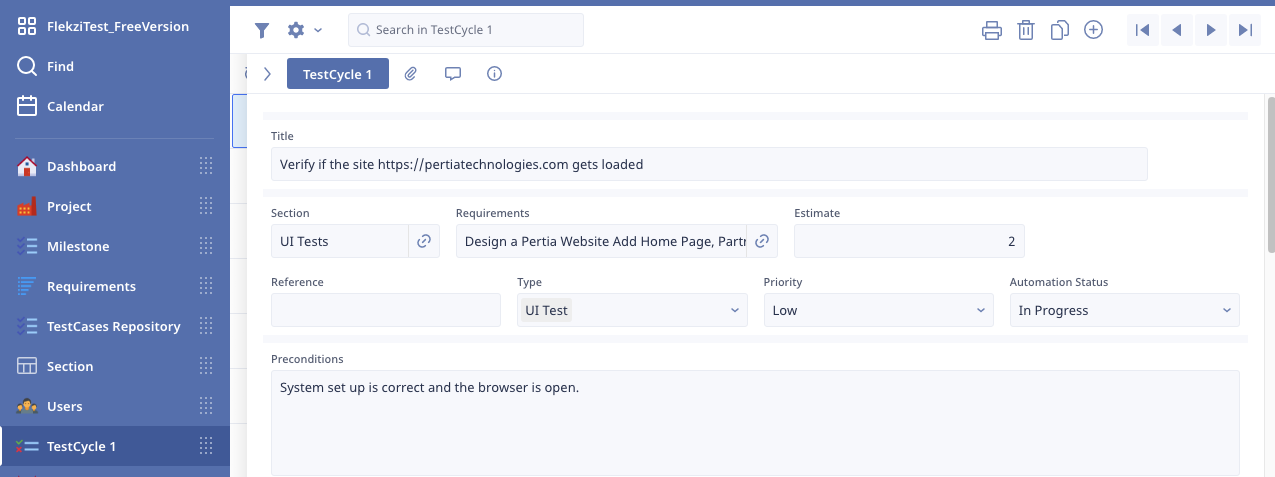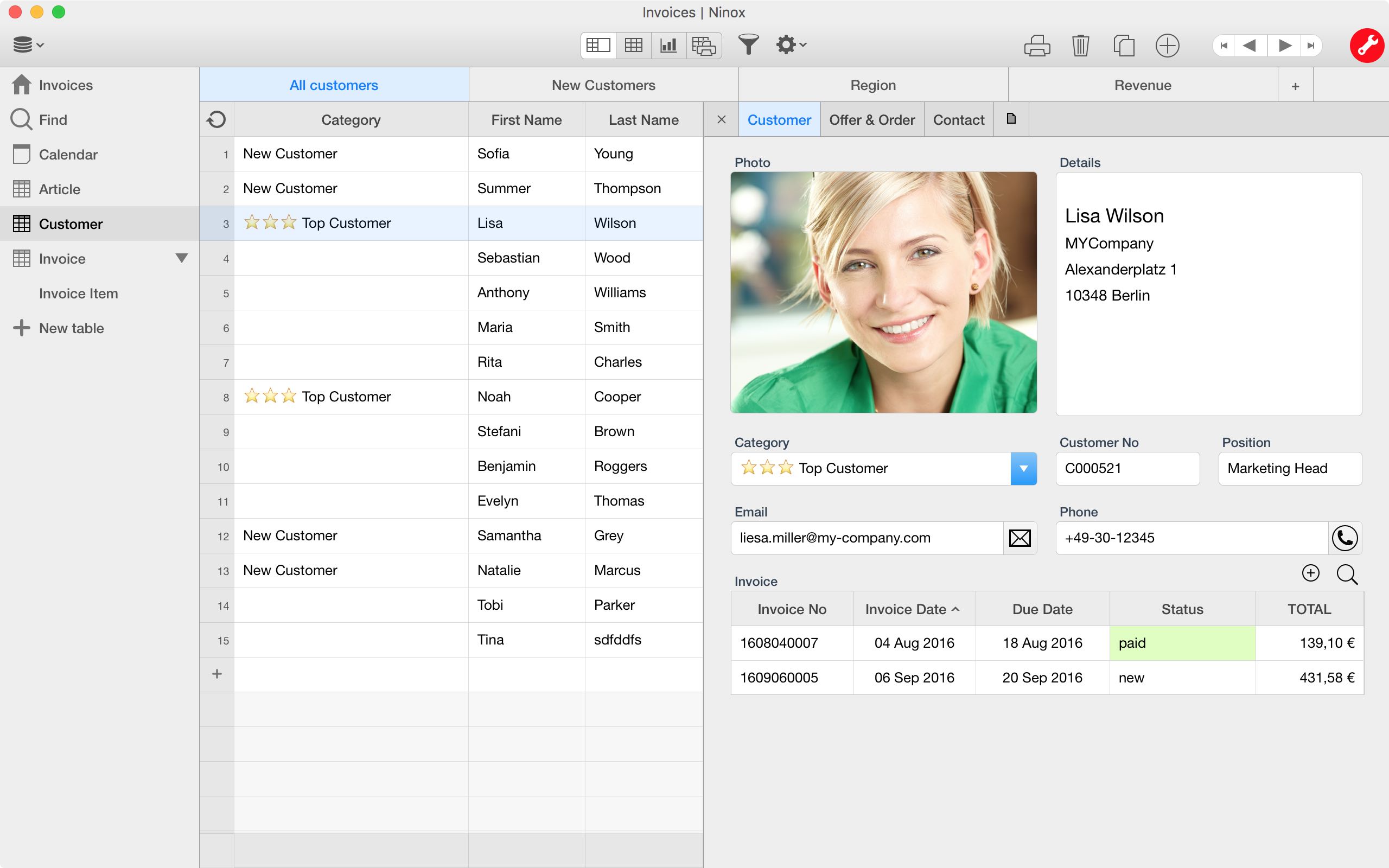

To database aficionados, Notion doesn’t feel like an enterprise-ready database. Similarly, Airtable lets you embed a view or base into any other document (whereas Notion doesn’t allow its pages to be enabled anywhere else). This isn’t possible in Notion where sharing a table gives you access to every single row and column. Permission-based views in Airtable let you lock down specific data and columns. a record creation or entering a specific view) can automate:Īs a native database, Airtable has certain advantages over Notion.
#NINOX DATABASE EXAMPLES PRO#
In addition to Airtable’s comprehensive Zapier integration, they’ve been teasing out Native Automations (for Pro and Enterprise plans only) that when triggered by an action (i.e. Automatically adding students into our private Slack workspace.

Typeform enables me to compile additional student information.Teachable imports all student and purchase data.In fact, I manage Supercharge your Productivity (a Notion course) using Airtable using the following integrations: While Notion does have some native integrations and an unofficial API, Airtable hands down owns this category putting them (and Coda) in a league of their own. I have a API joke but it’s coming soon.- Stephen Ou July 27, 2020 a gSuite or Evernote replacement), spreadsheets, and databases). Why? Well they distinctly have different uses cases: documents (i.e. oranges (and many have suggested that Coda is indeed the better comparison). Docs, sheets or databases?Ĭomparing Notion and Airtable is an example of apples vs.
#NINOX DATABASE EXAMPLES SOFTWARE#
Yet for everyone else, you get this kind of prefabricated result.”Īirtable’s competitors include Coda, Fibery, Anytype and SmartSheet (and to a lesser extent, project management software like Asana, ClickUp and Monday). “If you’re a programmer in Silicon Valley, you can tap into this very powerful technology as a medium for creative expression or economic value creation. Liu’s described his vision as democratizing powerful tech tools:
#NINOX DATABASE EXAMPLES SERIES#
A brief history of AirtableĪirtable was founded in 2012 2012 by Howie Liu, Andrew Ofstad, and Emmett Nicholas and in November 2018 raised a $100 mm Series C (valuing the company at $1.1 bn) led by Thrive Capital, Benchmark, and Coatue. By linking spreadsheets, you avoid having to enter the same information twice.Īnd whether you’re looking to build an e-commerce site, media publisher or music library the multiple dimensions of a database prevents you from having to type in any data twice – simultaneously increasing scalability and robustness. Each spreadsheet has columns and rows and they are connected using a primary key. In the our Advanced Notion Database Tutorial we described databases as:Ī series (i.e. Spreadsheets are 2-dimensional (with an X and Y axis) and databases add a third (and theoretically, an infinite number) of additional dimensions. Even the most skilled Excel junkies (aka F9 Jockeys) typically have never worked with databases. Introduction to Databasesīefore we can compare Notion and Airtable, we need a common understanding of their killer feature: databases.

Notion seems better for knowledge management, while Airtable feels like an enterprise solution that could serve as the backbone of an organization. Notion offers more breadth (beyond databases), yet can’t scale due to the lack of API and integrations. Our verdict: both are extremely powerful additions to your workflow. A Notion dashboard on top Airtable invoicing system on bottom. In this post, we look compare two of the most popular database tools: Notion and Airtable. But today, anyone can spin up a CRM, invoicing system and product management roadmap using these DIY (and no-code) tools. Prior to Airtable’s release in 2015, databases were the exclusive domain of programmers and “sysadmins” who could afford solutions like Oracle or SQL servers. Airtable and Notion are two game-changing tools for entrepreneurs, project managers and creators looking to implement databases cheaply and effectively.


 0 kommentar(er)
0 kommentar(er)
